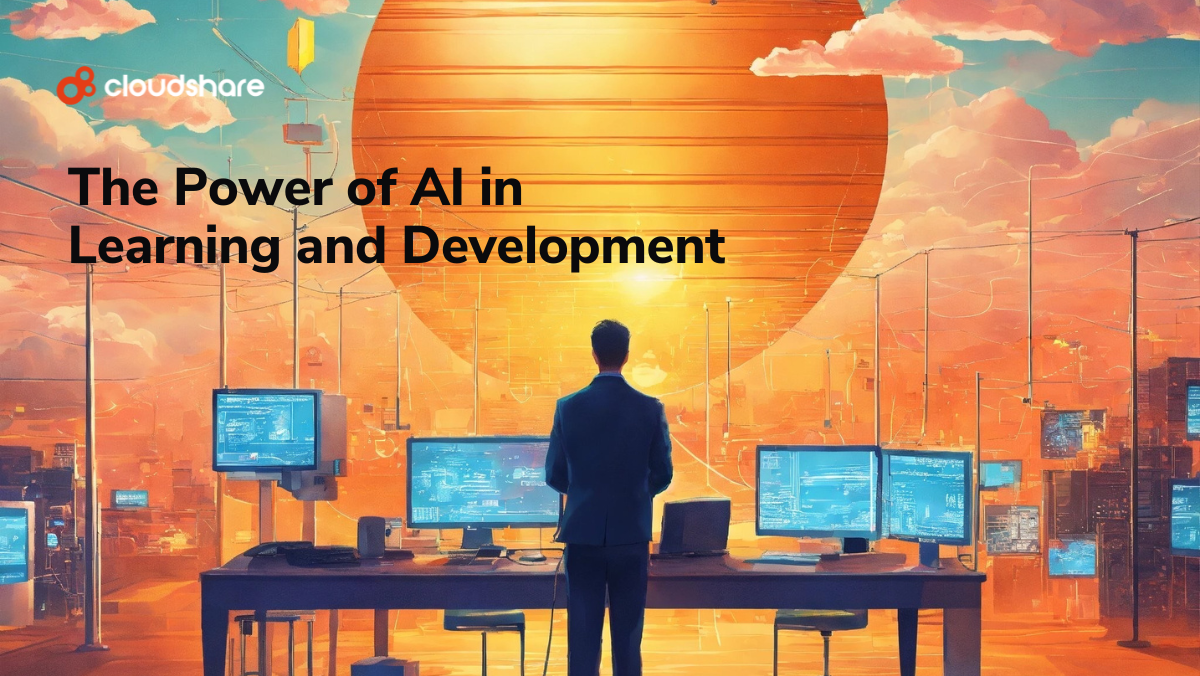
Artificial intelligence is arguably the most disruptive technology to emerge since the invention of the first smartphone. Already, it’s revolutionized multiple industries, automating repetitive manual work and providing invaluable insights to decision-makers. That’s not even the most exciting thing about the technology, either.
What’s most exhilarating about AI is the fact that as many have pointed out, this is the worst AI will ever be — it will continue growing exponentially more helpful and effective for the foreseeable future.
But what does this mean for learning and development? After all, it’s no secret that education in 2023 is completely different from what it was even as far back as 2021. While the global shift to hybrid learning certainly played a part in that change, artificial intelligence has proved equally influential.
Let’s see if we can answer that question, starting with an examination of the current AI-driven learning, development and training landscape.
How AI Training and Development Changes the Game
We’ve already talked a great deal about how SaaS organizations can use artificial intelligence to improve their training processes, advance customer education, and enhance both customer success and sales enablement. Even with all that, we’ve barely scratched the surface. The simple truth is that artificial intelligence has completely changed the business landscape, and even now continues to do so in ways that few can predict.
Unfortunately, as is the case with any new technology, there’s no shortage of decision-makers that don’t know how artificial intelligence actually works. Rather than develop a realistic idea of the technology’s strengths and weaknesses, they treat it as a silver bullet. As a result, they end up misusing artificial intelligence in a multitude of ways, attempting to replace human workers or expecting AI to make sound decisions with no human oversight.
These use cases are built on empty hype. In the long term, they’ll ultimately amount to little more than wasted time and revenue. They won’t realize the true benefits of artificial intelligence, which in learning and development include:
- Automating tasks such as scheduling and resource management.
- Identifying opportunities to improve operational efficiency.
- Augmenting both instructor-led and self-paced training with access to a virtual coach or guide.
- Developing and deploying more interactive hands-on training simulations.
- Personalizing training content based on needs and use case.
- Identifying and flagging skill and knowledge gaps within an organization.
- Assisting in content development and brainstorming.
- Creating basic content.
- Empowering learners with instant feedback and assessments.
As you can see, there are many ways AI can improve your training, regardless of whether your focus is onboarding new customers, certifying partners or helping employees acquire new skills. Based on the above, you might find it curious that many learning and development leaders are still hesitant to adopt the technology. As it turns out, they have very good reason to be.
The Ethical and Technical Challenges of AI in L&D
Artificial intelligence is revolutionary. It inarguably has the potential to completely change how we work, learn, and train. However, the technology is far from perfect, with downsides ranging from technical shortcomings to serious ethical challenges.
Hallucinations
No algorithm is infallible. Generative AI in particular has the unfortunate tendency to invent or outright distort facts and details. This phenomenon, known as hallucination, has a number of different causes, including:
- Incomplete or low-quality training data
- Insufficient guardrails
- Lack of human oversight
If you intend to use AI for any sort of fact-based work, take its outputs with a grain of salt — a lesson more than one professional has learned the hard way.
Biased Algorithms
Many of the more popular generative AI tools are functionally black boxes. Because you cannot review their training data or see their algorithms, you’re essentially taking it on faith that they’re properly configured. This lack of transparency could end up harming your employees, customers, and brand through discriminatory practices or inaccurate outputs.
Ethics
At present, there exists no concrete, universally accepted framework for the ethical development and use of artificial intelligence. While many popular tools have built-in guardrails to protect against misuse and misconduct, there is nothing stopping a developer from releasing an AI model without safeguards. This is exactly what happened with Elon Musk’s Grok.
Almost immediately after the release of Grok-2, users found that they were able to generate content drawing directly from copyrighted material, deepfakes of real people, and violent imagery.
“The lack of content moderation and guardrails on Grok presents significant moral and legal issues,” Ryan Waite, Vice President of Public Affairs at Think Big told AI Business. “Legal experts and civil rights advocates argue that Grok represents one of the most reckless implementations of AI… the legal red flags alone warrant a reevaluation of Grok’s content moderation protocols.”
Privacy and Copyright Infringement
ChatGPT, currently one of the most widely used artificial intelligence platforms, was trained on a massive volume of public, personal, and private data. Developer OpenAI has, since the solution’s release, been targeted by multiple lawsuits alleging that it acquired some of this data without consent. The company is also under investigation by privacy authorities.
The long and short is that any data you process through a tool like ChatGPT can no longer be considered private unless the developer explicitly states that your information will not be used for further training.
Rapid Evolution
As one of the fastest-adopted technologies in human history, AI continues to evolve at a breakneck pace. It can be incredibly challenging for organizations to keep up, which can cause them to miss out on key developments.
Content Quality
Generative AI has a tendency to output low-quality, generic material. Training professionals have little control over this output, resulting in misaligned or noncompliant training material. Additionally, many current AI tools in training and development lack the necessary scalability and adaptability to consistently meet the needs of learners and instructors.
Popular AI Tools for Training
Many of the challenges described above stem from a combination of inexperience and carelessness. Teaching yourself about the technology and its shortcomings represents an excellent first step in successfully implementing AI into your training processes. Always stay realistic about the strengths and shortcomings of any AI tool you evaluate.
Beyond that, prompt engineering represents one of the most effective skills to develop. By teaching yourself how to write more effective prompts, you’ll be able to exert a great deal more control over the output of tools like ChatGPT. Finally, you’d do well to familiarize yourself with some of the more common AI tools used in education:
- Learning experience platforms such as Absorb LMS. These solutions algorithmically collect data and then use that data to tailor the learning experience to each individual user.
- Analytics tools that leverage artificial intelligence to improve data collection, analysis, and reporting. EdApp provides this functionality alongside AI-supported content creation.
- Design and development tools such as Education CoPilot.
- AI-driven proofreading tools like Quillbot and Grammarly.
Embracing a Smarter Approach to Training
Artificial intelligence is by no means a silver bullet. It won’t solve all your training challenges. But if you approach the technology with an understanding of what it can and cannot do and integrate it properly, it can and will improve the way you deliver your training — no matter that training’s purpose.
If you’re interested in learning more about how to incorporate artificial intelligence into your business processes, we’d recommend checking out our webinar The Six Disciplines for Using Artificial Intelligence in Customer Education.
** This blog was originally posted in October 2023, and updated in January 2025.




